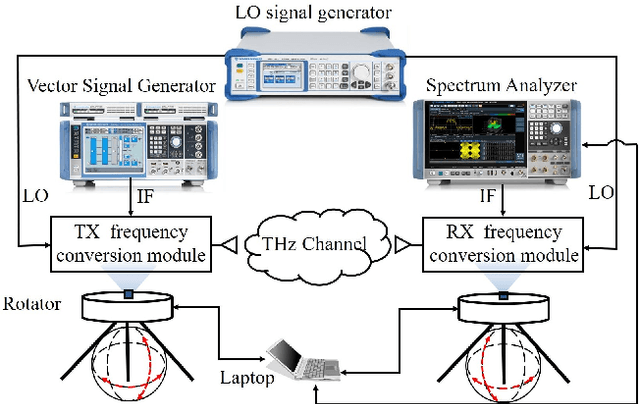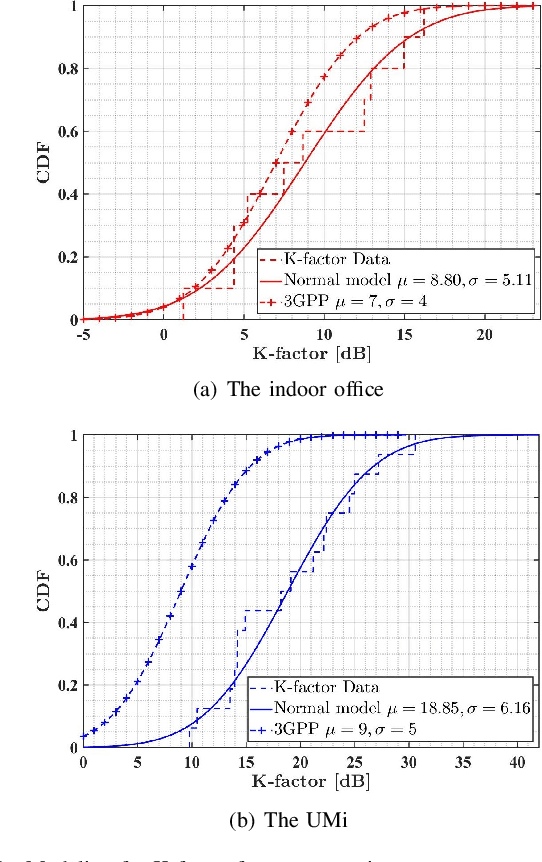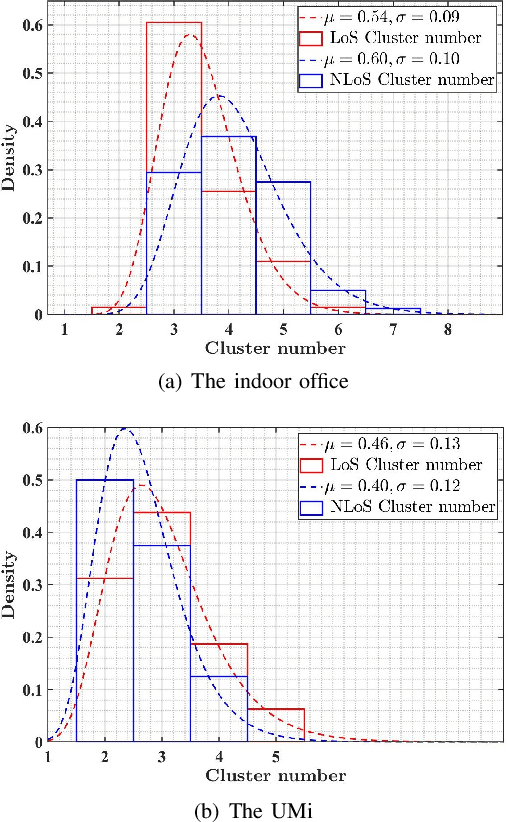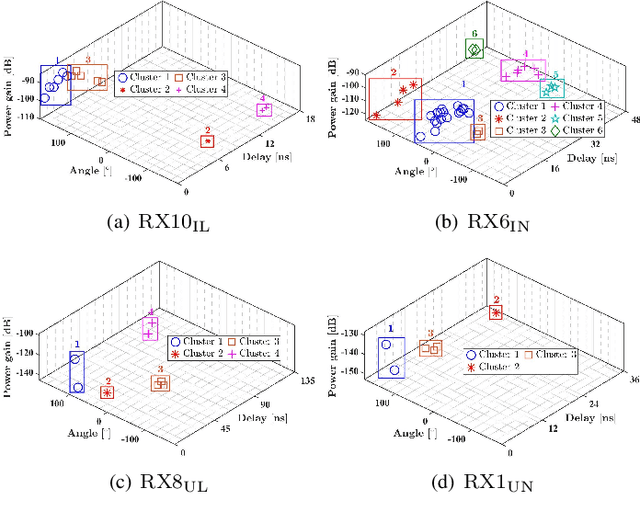Zhaowei Chang
Environment Reconstruction with Multi-targets Reflectors-merged Sensing Method Based on THz Single-sided Channel Characteristics
Dec 05, 2024Abstract:Terahertz (THz) integrated sensing and communication (ISAC) holds the potential to achieve high data rates and high-resolution sensing. Reconstructing the propagation environment is a vital step for THz ISAC, as it enhances the predictability of the communication channel to reduce communication overhead. In this letter, we propose an environment reconstruction methodology (ERM) merging reflectors of multi-targets based on THz single-sided channel small-scale characteristics. In this method, the inclination and position of tiny reflection faces of one single multi-path (MPC) are initially detected by double-triangle equations based on Snells law and geometry properties. Then, those reflection faces of multi-target MPCs, which are filtrated as available and one-order reflection MPCs, are globally merged to accurately reconstruct the entire propagation environment. The ERM is capable of operating with only small-scale parameters of receiving MPC. Subsequently, we validate our ERM through two experiments: bi-static ray-tracing simulations in an L-shaped room and channel measurements in an urban macrocellular (UMa) scenario in THz bands. The validation results demonstrate a small deviation of 0.03 m between the sensing outcomes and the predefined reflectors in the ray-tracing simulation and a small sensing root-mean-square error of 1.28 m and 0.45 m in line-of-sight and non-line-of-sight cases respectively based on channel measurements. Overall, this work is valuable for designing THz communication systems and facilitating the application of THz ISAC communication techniques.
3GPP-Like THz Channel Modeling for Indoor Office and Urban Microcellular Scenarios
May 24, 2023



Abstract:Terahertz (THz) communication is envisioned as the possible technology for the sixth-generation (6G) communication system. THz channel propagation characteristics are the basis of designing and evaluating for THz communication system. In this paper, THz channel measurements at 100 GHz and 132 GHz are conducted in an indoor office scenario and an urban microcellular (UMi) scenario, respectively. Based on the measurement, the 3GPP-like channel parameters are extracted and analyzed. Moreover, the parameters models are available for the simulation of the channel impulse response by the geometry-based stochastic model (GBSM). Then, the comparisons between measurement-based parameter models and 3rd Generation Partnership Project (3GPP) channel models are investigated. It is observed that the case with path loss approaching free space exists in the NLoS scenario. Besides, the cluster number are 4 at LoS and 5 at NLoS in the indoor office and 4 at LoS and 3 at NLoS in the UMi, which are much less than 3GPP. The multipath component (MPC) in the THz channel distributes more simpler and more sparsely than the 3GPP millimeter wave (mm-wave) channel models. Furthermore, the ergodic capacity of mm-wave and THz are evaluated by the proposed THz GBSM implementation framework. The THz measurement model predicts the smallest capacity, indicating that high carrier frequency is limited to the single transmission mechanism of reflection and results in the reduction of cluster numbers and ergodic capacity. Generally, these results are helpful to understand and model the THz channel and apply the THz communication technique for 6G.
Frequency-Angle Two-Dimensional Reflection Coefficient Modeling Based on Terahertz Channel Measurement
Jul 11, 2022



Abstract:Terahertz (THz) channel propagation characteristics are vital for the design, evaluation, and optimization for THz communication systems. Moreover, reflection plays a significant role in channel propagation. In this letter, the reflection coefficient of the THz channel is researched based on extensive measurement campaigns. Firstly, we set up the THz channel sounder from 220 to 320 GHz with the incident angle ranging from 10{\deg} to 80{\deg}. Based on the measured propagation loss, the reflection coefficients of five building materials, i.e., glass, tile, aluminium alloy, board, and plasterboard, are calculated separately for frequencies and incident angles. It is found that the lack of THz relative parameters leads to the Fresnel model of non-metallic materials can not fit the measured data well. Thus, we propose a frequency-angle two-dimensional reflection coefficient model by modifying the Fresnel model with the Lorenz and Drude model. The proposed model characterizes the frequency and incident angle for reflection coefficients and shows low root-mean-square error with the measured data. Generally, these results are useful for modeling THz channels.
 Add to Chrome
Add to Chrome Add to Firefox
Add to Firefox Add to Edge
Add to Edge